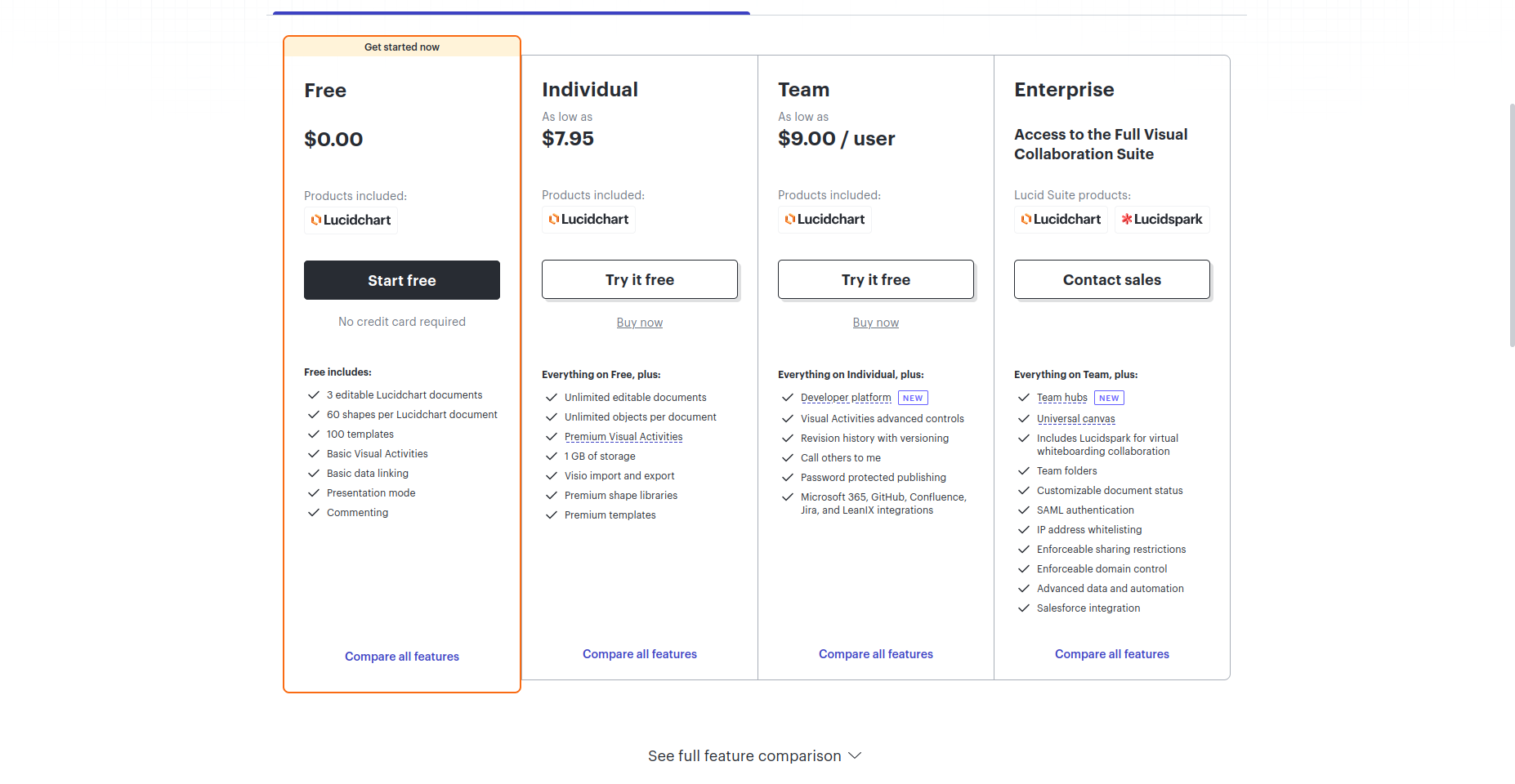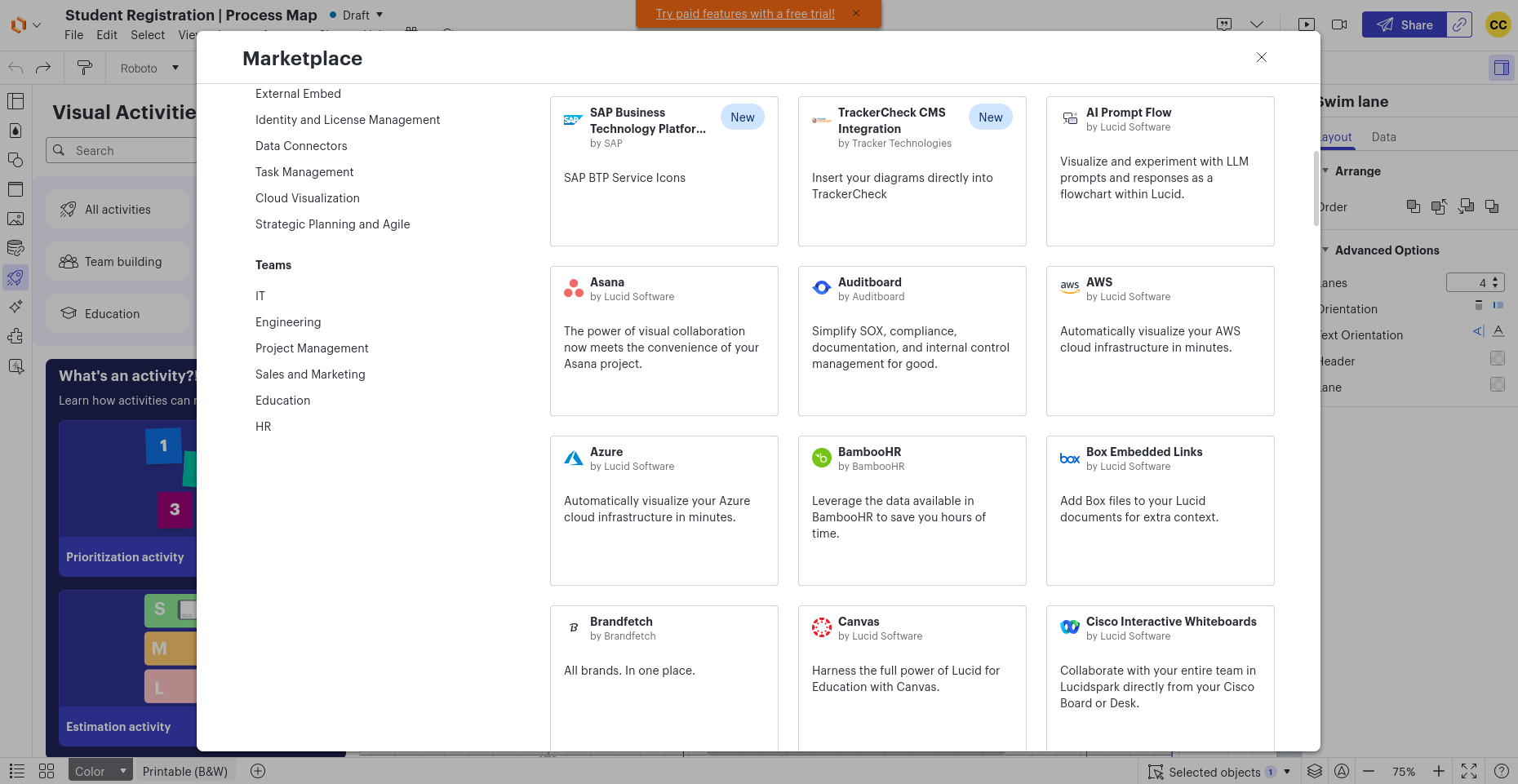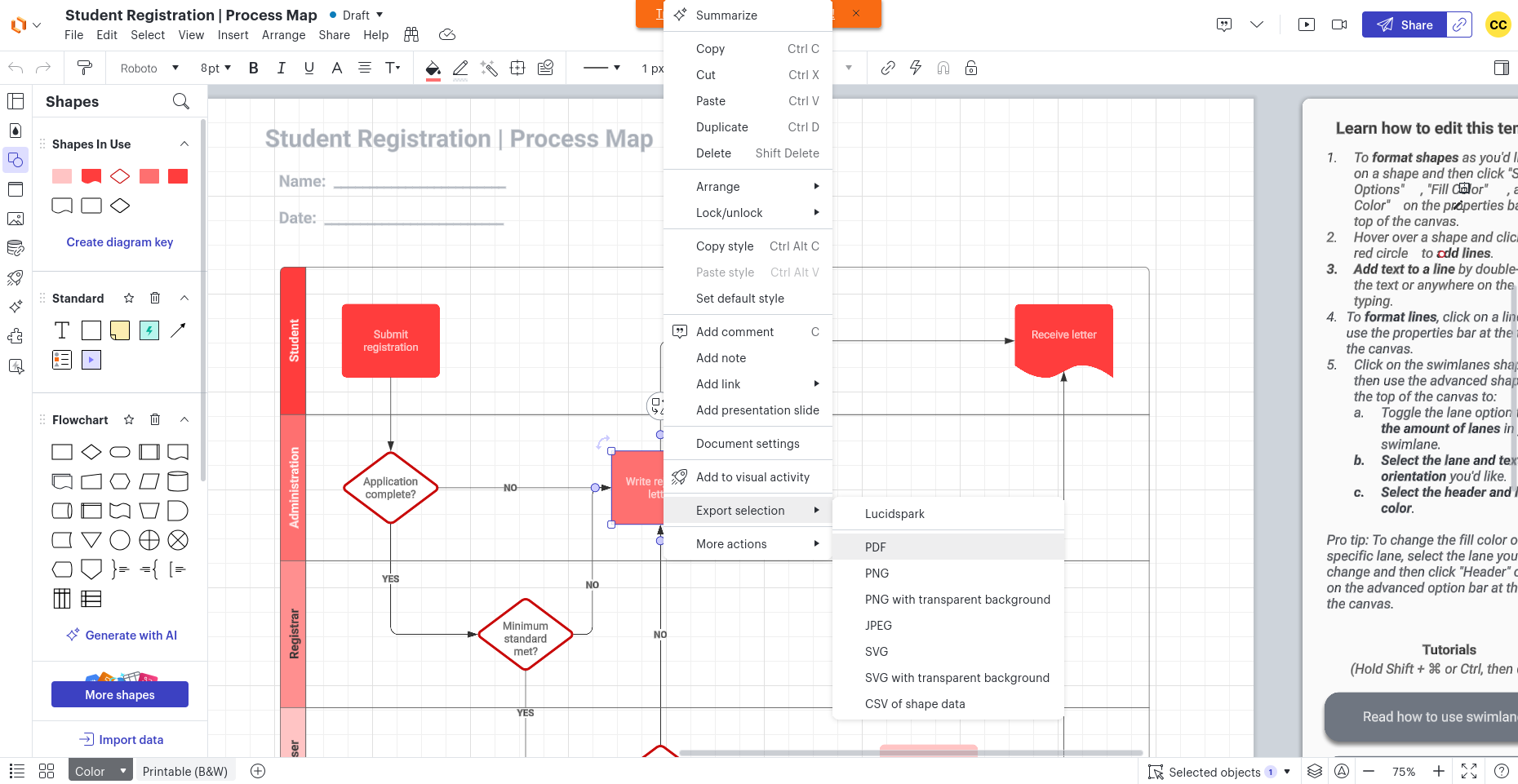TechRadar Verdict
Lucidchart is an extremely powerful visualization program with impressive features and great collaboration tools for large businesses but also plenty of options for personal users. You’ll be surprised how much functionality you get with the free version, too.
Pros
- +
Browser-based, use it on any desktop
- +
Good selection of templates
- +
Very easy to get started
Cons
- -
No live chat support
Why you can trust TechRadar
Lucidchart is one of the best flowchart software platforms available. Powerful and data-based, it is used by 99% of the world’s largest Fortune 500 companies. Based on professional flowchart diagrams, it’s a great choice for those looking for actionable information that they can use to improve company workflow processes.
A web based (HTML5) tool that enables online collaboration among local and distributed teams, Lucidchart has been around since 2008. It’s become quite a big name in the diagramming market, hence the high regard in which it is held.
Along with an impressive range of features suited to businesses of all sizes, Lucidchart comes with a great free trial and easy-to-use templates to get you started.
We’ve spent some time using Lucidchart to help you decide if it is the right tool for your purposes. Lucidchart has been evaluated based on price, features, ease of use, support provision, and competing tools.

Lucidchart: Plans and pricing
With both personal and business plans, Lucidchart offers a range of pricing options for users of all sizes. It’s worth noting that all subscriptions include a free trial so you can test before you buy.
The Free subscription is quite limited but gives you access to free shape libraries and all design templates. It’s a good choice if you just want to play around and make a few diagrams for your personal project.
On the other hand, the Individual subscription costs $7.95 per month but offers significantly more powerful features. Among these are 1 GB of storage, unlimited documents and shapes, Visio import and export, premium shape libraries, and premium templates.
Sign up to the TechRadar Pro newsletter to get all the top news, opinion, features and guidance your business needs to succeed!
If you’re looking for a more powerful subscription to cover your entire business, Lucidchart’s Team plan starts at just $9 per user user per month. This plan includes everything in the personal Pro plan, along with revision history, the Visual Activities feedback tool, collaboration tools, and a range of useful integrations with Microsoft, Google. You also get access to the Lucidchart API.
If you’re running a larger business, Lucidchart also offers a custom Enterprise plan which is priced according to your needs. Along with this, it includes a range of management features and optional enhancements to help you boost your business.

Lucidchart: Features
As one of the leading diagramming tools available, Lucidchart comes with an impressive range of noteworthy features. We’ve covered some of the best here, but it’s by no means a comprehensive list.
One of the most noteworthy things about Lucidchart is its great list of keyboard shortcuts. Designed to help you streamline otherwise time-consuming processes, you should find that these dramatically improve your productivity.
Lucidchart also comes with powerful layering features. These allow you to create diagrams within diagrams, which should, in turn, help you build a clean, intuitive layout that’s easy to understand.
Similarly, you can also keep things simple by linking to text boxes or blocks within your diagram. These will only appear when the relevant element is clicked.
There’s nothing more annoying than having to communicate with your coworkers via email or other messaging apps. Luckily, Lucidchart includes a range of integrated collaboration features which you can use to communicate with your team members while you’re working. Asana, Atlassian, Microsoft, and Google products are all supported. There is even the option to use Microsoft Copilot to produce AI summaries of your diagrams.
Traditional diagramming software can be messy and hard to work with, especially if you have to create neat, presentation-quality images. However, Lucidchart includes a range of “smart” design elements which automatically keep your diagrams tidy.

Lucidchart: Ease of use
An in-depth trial of the Lucidchart user interface shows why it’s up there with the best management software available. It’s easy to use from the beginning and took us no more than a couple of minutes to get the hang of.
On top of this, Lucidchart allows you to specify exactly what you’re going to be using it for. Doing so causes the most relevant tools to be presented in an easy-access dashboard.
When you actually begin to build your first diagram, you will be able to start with a blank document or choose from one of a range of templates. From there, it’s all a matter of adding the elements you want via the intuitive editing interface.
These are accessed via a menu on the left-hand side of the screen. Standard formatting tools can be found across the top of the interface, and right-clicking a placed element will reveal a context menu. It’s all easy to use, uncomplicated, and fast.
Remember, this is browser-based software, so you can use it on any operating system provided you have a compatible browser.

Lucidchart: Customer support
Unfortunately, Lucidchart does fall down slightly on the customer service and support front. It doesn’t offer any online live chat, but it does come with quite an impressive resource center and community forum.
If you do want to speak with a member of the Lucidchart team, you will have to call or reach out via their social media pages. Helpfully, a Lucidchart flowchart illustrates the process to follow – search the help center, search the community, and post in the community if you need help with the app. If the problem relates to how Lucidchart works, you can raise a support ticket.
It is a relief that the resource center contains solutions to a range of popular questions. We found it very useful, and expect you will too. The Lucid community board is a friendly place, and thanks to the wide use of the software, pretty busy.
Lucidchart: The competition
Although Lucidchart is a leader in the world of diagramming and presentation software, there are numerous great alternatives that are worth considering.
Microsoft Visio is perhaps the biggest name in this field, but has issues. Its baked-in Microsoft-ness, outdated legacy artwork, and the comparative difficulty of actually accessing the tool, make it pretty undesirable. Its collaboration tools fall short, too.
Lucidchart, by comparison, feels light and fresh, and probably easier to use.
Meanwhile, platforms like Draw.io and EdrawMind are full cloud integrations, allowing you to save and access your diagrams and charts from anywhere. They’re closer to Lucidchart than Visio, and we think that similarity proves Lucidchart’s superiority.
Lucidchart: Final verdict
All things considered, it’s easy to see why Lucidchart is up there with the best diagramming and chart management software available. Its prices are extremely reasonable, and it even comes with a full free trial.
Similarly, Lucidchart’s depth of features is almost unrivaled, and its user interface is simple and intuitive. Although its customer service does fall down slightly, everything else about this program is so good that we think you’ll love it.
We've listed the best mind map software.
Christian Cawley has extensive experience as a writer and editor in consumer electronics, IT and entertainment media. He has contributed to TechRadar since 2017 and has been published in Computer Weekly, Linux Format, ComputerActive, and other publications. Formerly the editor responsible for Linux, Security, Programming, and DIY at MakeUseOf.com, Christian previously worked as a desktop and software support specialist in the public and private sectors.


